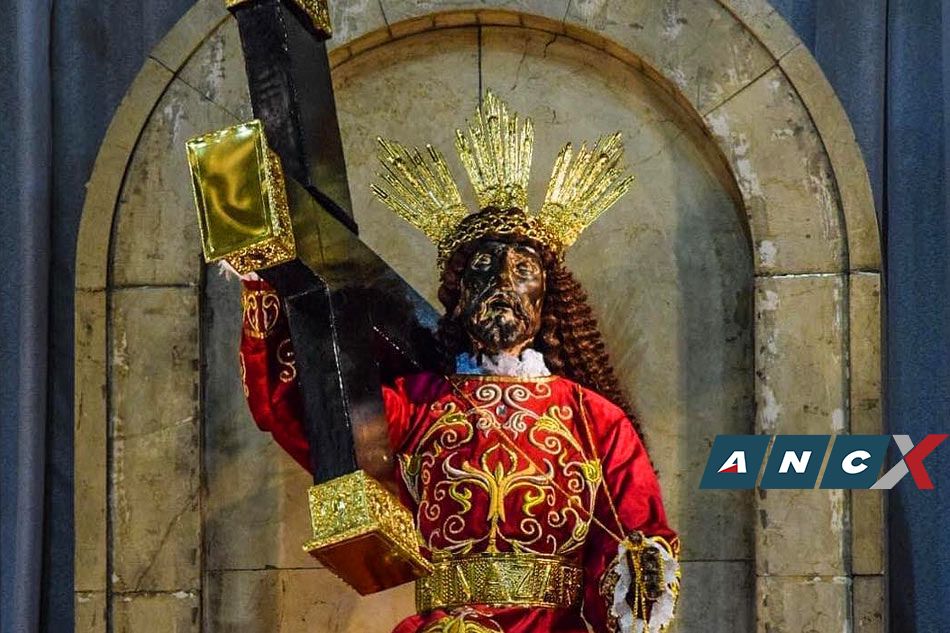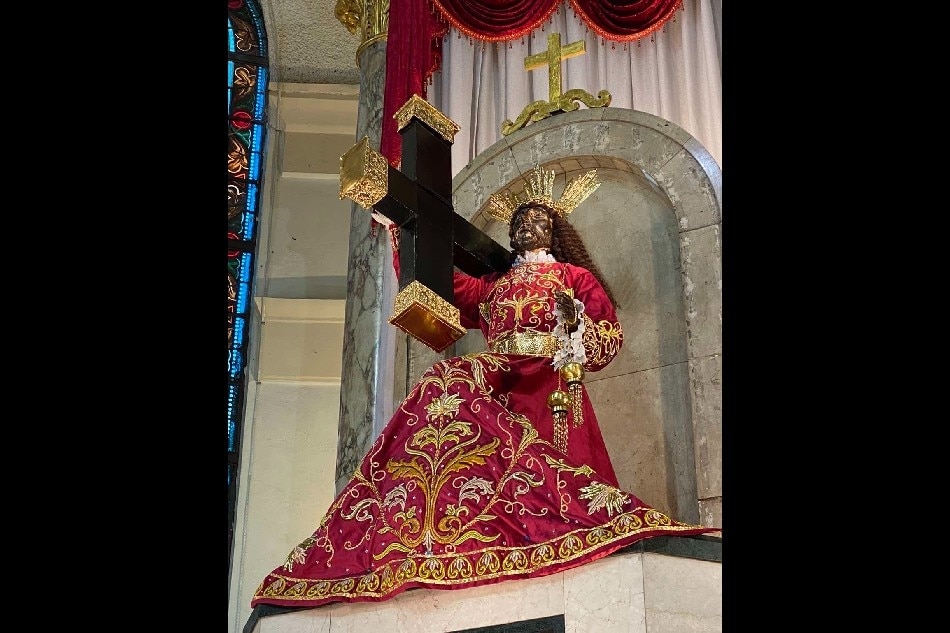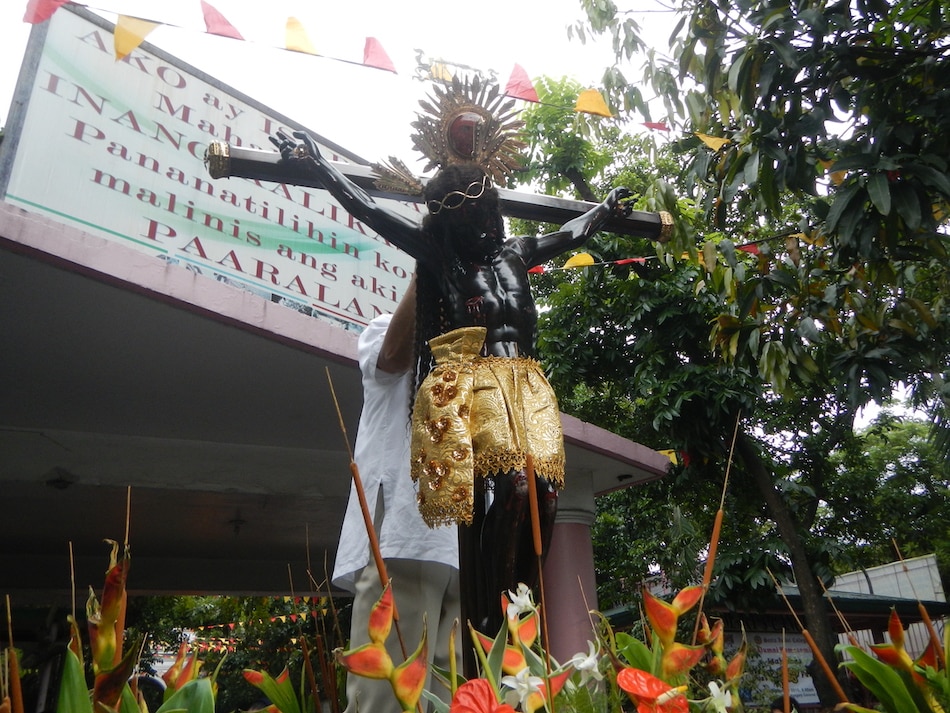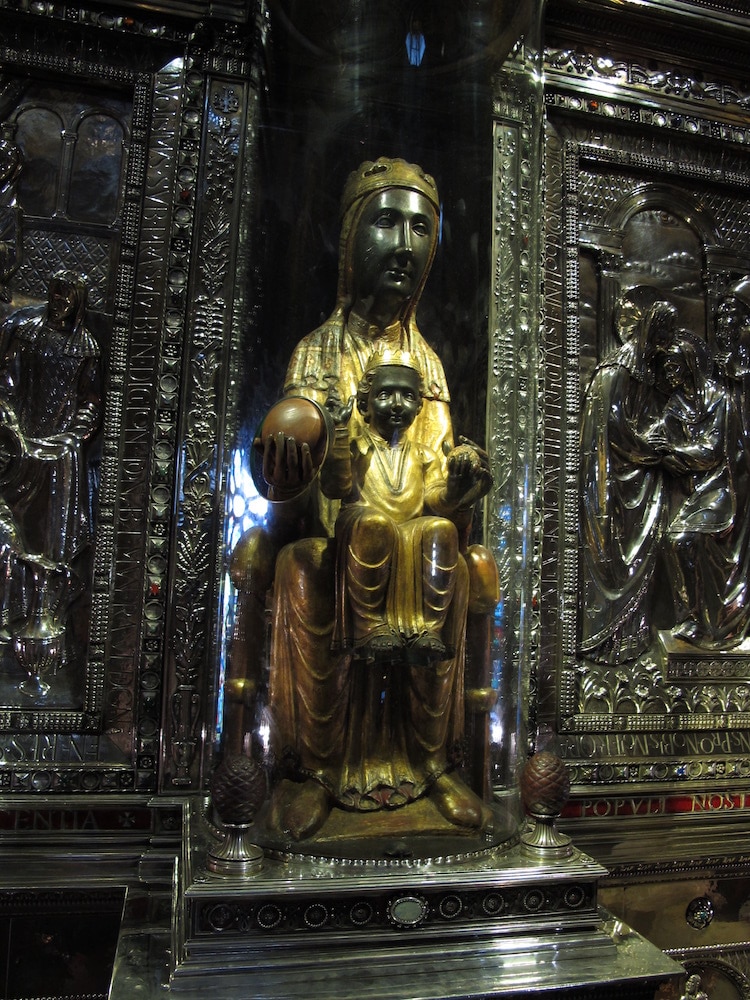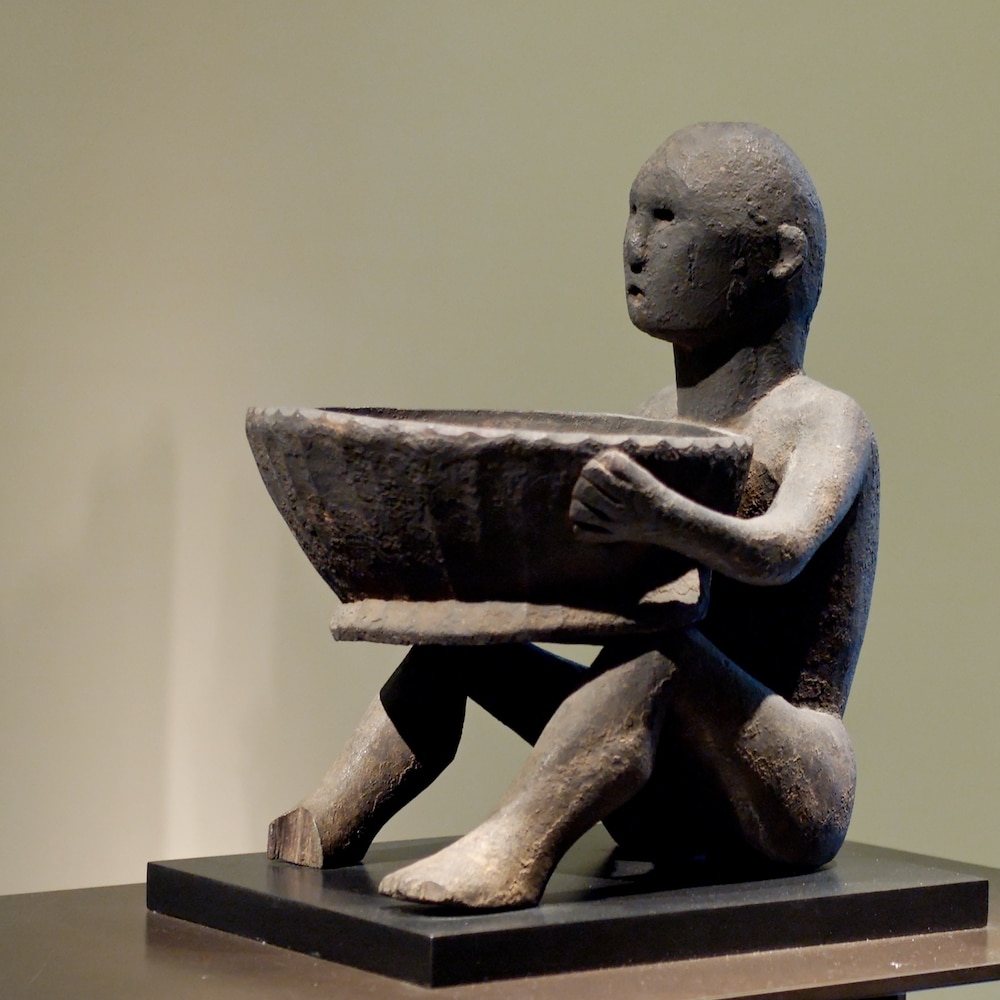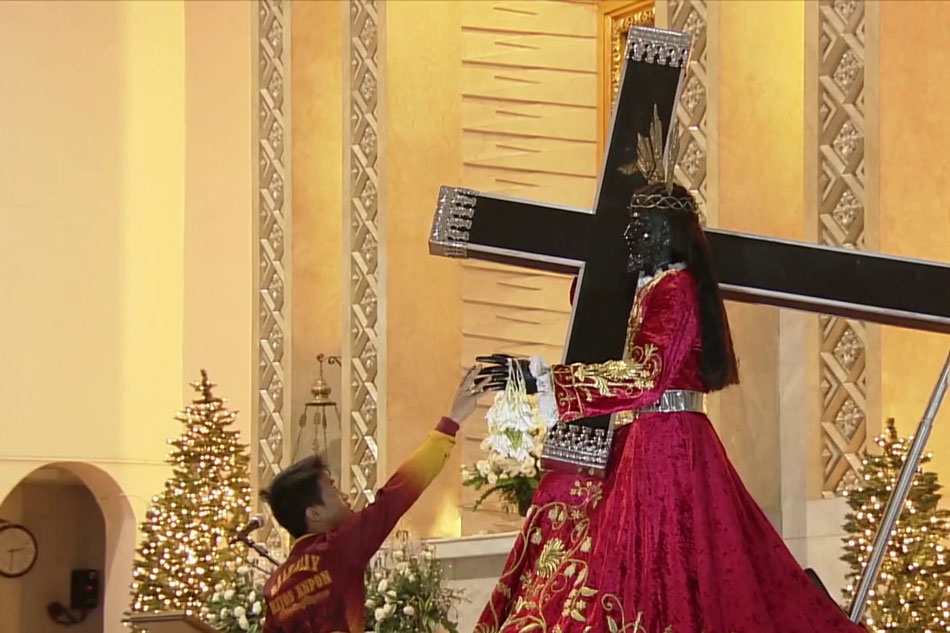A great number of Filipino Catholics remain passionate devotees of the Nuestro Padre Jesus Nazareno or the Black Nazarene—at least that’s what the multitude that takes over the streets of Quiapo during the pre-pandemic Traslacions tells us. They join the celebration believing the life-sized wooden image of Christ carrying his cross to Calvary can heal terminal illnesses, grant special requests, make their lives better.
Unlike the usual representations of Christ in the Philippines, which are fair-skinned, and possessing either Chinese or European features, the skin color of Quiapo’s famous Nazarene is neither white nor brown, but black. Why is this so?
There are people who will tell you it’s because black is more relatable to Filipinos, who are largely of a darker complexion. However, the Nazarene’s image is noticeably much darker than the color of the Negrito ethnic groups that originally inhabited the archipelago.
There’s also that story where the ship that carried the statue from Mexico to the Philippines caught fire, which charred the ivory image of the Nazarene. But if this were true, how come its surface remained smooth?
Then there’s also that commonsensical guess that its original sculptor, who is Mexican, just happened to have a preference for dark wood.
Dr. Fernando Nakpil Zialcita, a cultural anthropology professor at the Ateneo de Manila University, gave a talk on the subject of the Black Nazarene in time for the celebration of Quiapo’s famed Christ image. Held at the Bahay Nakpil-Bautista (also called Bahay ng Katipunero) in Quiapo, Manila, the lecture sought to inform the public about the real reason the religious figure is black, as well as give light to the relevance of this color to our culture and faith.
In the Philippines, the Nazarene is not the only image of Christ carved out in dark wood. Some of us may also be familiar with the Santo Cristo de Longos in Binondo; the Santo Cristo del Tesoro, patron of Colegio de Sta. Isabel in Ermita; and the Santo Niño de Pandacan.
According to Zialcita, this just goes to show that the devotion to the dark representation of Christ, his mother, or any saint is the result of an important tradition in the Catholic church and the pagan world. It depicts what should be recognized as sacred.
“Ayon sa sosyologong si Emile Durkheim, ang sagradoy’s tanda ng pagiging tunay na iba,” said the professor, who also heads Ateneo’s cultural heritage program. “Nasa labas ng pangkaraniwang mundo ng isang lipunan. Pero ang sagrado rin ang siyang nagdadala ng mga pinakamahalagang mga pagapapahalaga o values ng isang lipunan.”
Black has a longstanding history in the Catholic faith, offered Zialcita. In fact, Black Madonnas were already widespread in Europe during the 11th to the 12th centuries. There’s one enshrined at the Our Lady of Montserrat in Spain, Our Lady of Chartres in France, and Our Lady of Czestochowa in Poland. A replica of the popular image of the Virgin of Montserrat can be found at the Abbey Church of San Beda University.
Black is also linked to older pagan cults. Celtic, Druidic rites took place around representations of black images, Zialcita wrote in a published work titled “The Burnt Christ: The Filipinization of a Mexican Icon.”
“The Greek goddess Artemis is associated with fertility. One representation shows her black and with many mammary glands,” Zialcita noted. Cybele, the mother of all the gods and goddesses, is associated with the Earth, and among her symbols are black stones. Meanwhile, on the Isis cult, one representation shows the Egyptian goddess as black, seated on a throne, cradling her son Horus on her lap.
In the Philippines, the statues representing a rice deity (bulul) are also black. “Binubuhusan sila ng dugo ng baboy. Kapag natuyo ang dugo, nagiging itim.”
According to experts, in agrarian societies, the value of the color black is recognized as a symbol of fertility of the soil and the womb.
“Sa Europa, moreno ang mga magbubukid dahil sa sila’y nakababad sa araw. [Samantalang] mapuputi ang mga aristokratang nakaluklok sa kanilang mga mansyon. Dito nagmula ang ekspresyong dugong bughaw, kasi nakikita ang mga ugat sa kanilang balat,” he says. “Laganap ang debosyon sa mga Birheng Itim sa mga magbubukid sa Europa dahil sa sila ri’y medyo sunog.”
In Central America, before the spread of Christianity, it was customary for warriors to paint their bodies black because it symbolizes magic, sacrifice and victory in war. The color of ordinary people in Latin America is brown, and they see themselves in the black Christs.
In “The Burnt Christ,” Zialcita further discussed the meanings and connotations of the colors black and white. “Black suggests the night, mystery, the interior of caves and the underground. The very absence of color and light suggests death. But it can also suggest the opposite. Black is the color of the soil from where crops spring to nourish life,” he wrote. “White too is ambivalent in meaning. On the one hand it is associated with light and therefore life. But, because the loss of blood results in a pallor, it too is associated with death. Hence, white garments are used for mourning in traditional Europe, in Chinese-influenced societies. Fertility goddesses can be black in one version and white in another (de Miguel 2004).”
Black symbolizes different things to different people, says Zialcita. “Patron ng pagkamayabong; protektor ng kalaliman ng lupain; buhay at kamatayan; kakulay ng mga mapagkumbaba (sa Europa); kakulay ng mga sinakop (sa Latino Amerika); sagisag ng tagumpay.”
But why is the Nazareno in Quiapo black? It’s because it was carved in Mexico in the 1600s, when the said color was considered sacred, the professor says. It was also around that time when the religious image reached Manila, before it was given to Quiapo in 1767 and later on became popular to devotees for the miracles it brought to their lives. Zialcita says ordinary Filipinos tend to have more affinity for the Black Nazarene than the fair-skinned religious statues and images, because it’s not white nor rich, and therefore is one of them.
“Hindi itim ang imahe ng Nazareno dahil siya ay nakaligtas sa isang sunog kundi dahil siya imahe na palatandaan ni Kristo,” he says. “Kung dati ay banal siya dahil sa kaugnayan sa agrikultura, ngayon ay banal siya sapagkat kakulay niya ang milyon milyong ordinaryong Pilipino na sunog din ang balat dahil sa kanilang gawain sa lansangan.”
By knowing and understanding the meaning behind the sacredness of the Black Nazarene’s color, Zialcita’s hope is for devotees to not only strongly identify with the passion and suffering that Christ’s image depicts, but enjoin Him as well in the goodness of His thoughts and deeds.


